 Animals
Animals  Animals
Animals  Weird Stuff
Weird Stuff 10 Weird Things That Warp Your Sense of Time
 Miscellaneous
Miscellaneous Ten More Extremely Unexpected U.S. State “Firsts”
 Humans
Humans 10 Ideas That Scare People to Death
 Music
Music The Cursed Decade: 10 Classic Rock Stars Who Had Low Periods in the 1980s
 Health
Health 10 Crazy Ways Sleep Deprivation Can Affect You
 History
History 10 Enthralling Facts about the Field of Cloth of Gold
 Pop Culture
Pop Culture The Ten Greatest Engineers in Science Fiction History
 Humans
Humans Ten Journalists Who Got Caught Faking the News
 Travel
Travel 10 Best Hiking Trails in America with Breathtaking Views
 Animals
Animals Ten Animals That Produce and Store Toxins in Unlikely Places
 Weird Stuff
Weird Stuff 10 Weird Things That Warp Your Sense of Time
 Miscellaneous
Miscellaneous Ten More Extremely Unexpected U.S. State “Firsts”
Who's Behind Listverse?

Jamie Frater
Head Editor
Jamie founded Listverse due to an insatiable desire to share fascinating, obscure, and bizarre facts. He has been a guest speaker on numerous national radio and television stations and is a five time published author.
More About Us Humans
Humans 10 Ideas That Scare People to Death
 Music
Music The Cursed Decade: 10 Classic Rock Stars Who Had Low Periods in the 1980s
 Health
Health 10 Crazy Ways Sleep Deprivation Can Affect You
 History
History 10 Enthralling Facts about the Field of Cloth of Gold
 Pop Culture
Pop Culture The Ten Greatest Engineers in Science Fiction History
 Humans
Humans Ten Journalists Who Got Caught Faking the News
 Travel
Travel 10 Best Hiking Trails in America with Breathtaking Views
10 Incredible Limbless Legends
Life can be tough. Between work, daily tasks, families, and other various activities, it can be somewhat overwhelming. Now imagine having to live a full and complex life without the use of limbs.
Many might fear that losing limbs would limit their abilities to do many things. However, throughout history, there have been many people who have had fulfilling, fun, limitless, and incredible lives without the use of their limbs. The stories of these limbless legends exemplify how amazing and courageous the human spirit can be when given the toughest of odds.
10 Kittie Smith
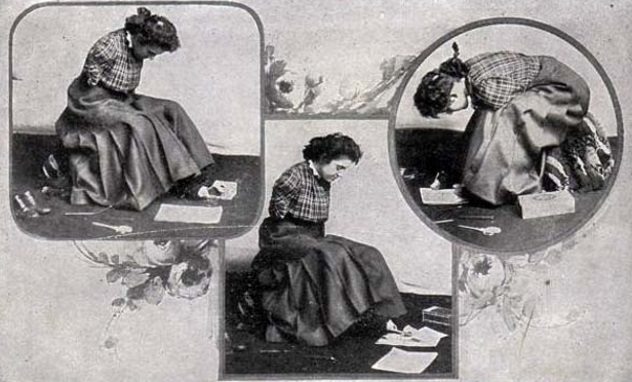
Born in October 1882, Katherine “Kittie” Smith was the third child of a poor Chicago family. During her childhood, Kittie was quite unremarkable; born with all her limbs, she lived a simple life with her family. Things took a tragic turn, however, when at the young age of nine, Kittie’s mother died suddenly. Her once-peaceful family was turned upside down, and Kittie was forced to live with her alcoholic and abusive father. A year later, Kittie’s father, in a drunken rage, held her arms to a stove, burning them so severely that both limbs had to be amputated.[1]
After a trial in which jurors found her father not guilty of the crime, Kittie found herself as a ward of the Children’s Home Society of Illinois. During this time, she was educated by the Home for Destitute and Crippled Children. Although she had no arms, Kittie learned to sew, write, and do other tasks. She was able to dress herself as well as brush her teeth and hair. Sweeping, mopping, and other cleaning tasks proved no problem. More amazing still, Kittie could play the piano and had above-par skills in woodworking.
After she reached maturity and was no longer a ward, she was on her own, but having limbs didn’t stop Miss Kittie. She successfully thrived and earned a living on her own by creating drawings, paintings, embroideries, and other fantastic items using only her feet and selling them. Her life story gets even more incredible, as Kittie Smith became the first woman to vote in Illinois in 1913, when Gracie Wilbur Trout and her companions persistently challenged the laws preventing women to vote. Kittie earned the name “The Armless Dynamo,” and her amazing life shows that she earned it brilliantly.
9 Johnny Eck
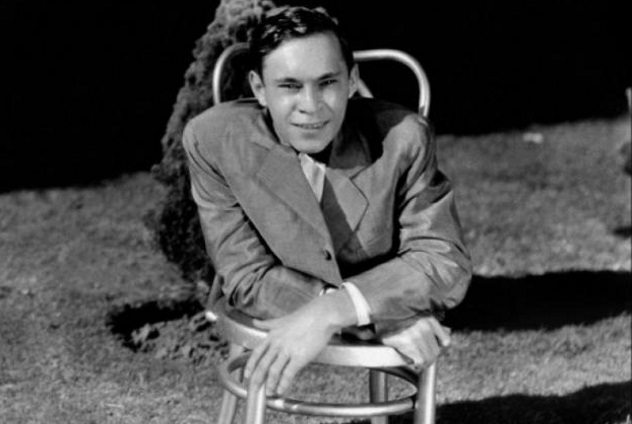
In August 1911, John and Amelia Eckhardt had a pair of twin sons, which was a seemingly normal occurrence. However, John Jr. was a bit different from his brother Robert; Johnny was missing both of his legs. His parents and doctors were amazed to find that John was “snapped off at the waist.” Though Johnny had no legs, nothing seemed to slow him down. The young child was able to walk on his hands efficiently long before his twin could stand and walk with his legs. As he grew, Johnny became fiercely independent and showed great agility on his hands.[2]
Johnny gained notoriety at a young age as he and his brother became stars in John McAslan’s magic show in 1923. He and Robert mesmerized McAslan, who convinced Johnny’s parents to sign a one-year contract. Performing with Robert, Johnny shocked and amazed audiences with his antics and body, earning the name “The Famous Half Boy.” Though Robert left the limelight, Johnny was destined to continue his climb to fame. He performed with many carnivals, circuses, and oddity shows, mastering magic and acrobatics.
The small stage wasn’t grand enough for Johnny, however. He aspired to more. In 1932, Johnny was cast in Tod Browning’s film Freaks, in which he led the infamous group of oddities to the film’s climax. He also appeared in the Tarzan films of the time as a “gooney-bird.” After the excitement and curiosity over oddity shows subsided, Johnny, along with his brother Robert, settled down and pursued the passions of their youth, including painting, music, and woodworking. Johnny passed away in 1991 as a relative recluse with his brother by his side.
8 Prince Randian
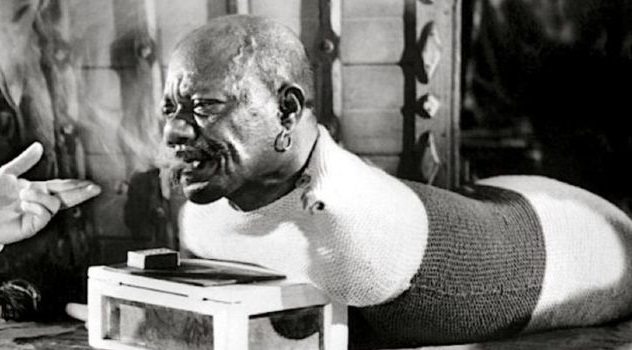
In 1871, two Indian parents in British Guiana welcomed their new child into the world. However, one glance at the child proved that he was quite a bit different from others. Prince Randian was born with no arms or legs. Randian suffered from a rare condition known as tetra-amelia syndrome, which is characterized by the absence of all limbs. Most babies born with the condition are stillborn, as the syndrome affects the other organs of the body. However, Randian was more robust. Randian was a precocious child and was said to be very independent; other than those traits, little is known about his life before he was brought to the United States.
In 1889, P.T. Barnum of the Barnum and Bailey Circus brought the young Randian to the US, where he immediately began performing in the side- and oddity shows of the time. Huge crowds would gather to view Randian and were amazed at how he could do most things for himself even without the use of limbs. Randian earned the name “The Human Caterpillar” during his peak fame, since he wore a one-piece wool garment with stripes on it. The stripes, combined with his worm-like locomotion, earned him this designation.
Prince Randian incredibly smart and talented. He was fluent in Hindi, English, French, and German. He could roll and light cigarettes with only his mouth. He could also read, write, paint, and shave. He was also very charming and funny, which allowed him to woo a lady known as Princess Sarah. They had five children together. His biggest moment in the limelight came when Tod Browning cast Randian in Freaks. In the film, he rolls a cigarette and lights it using nothing but his mouth, showing off his amazing abilities. Afterward, Prince Randian left the limelight and retired to New Jersey with his family. Shortly after a comeback performance in 1934, The Human Caterpillar died of a heart attack.[3]
7 Eli Bowen
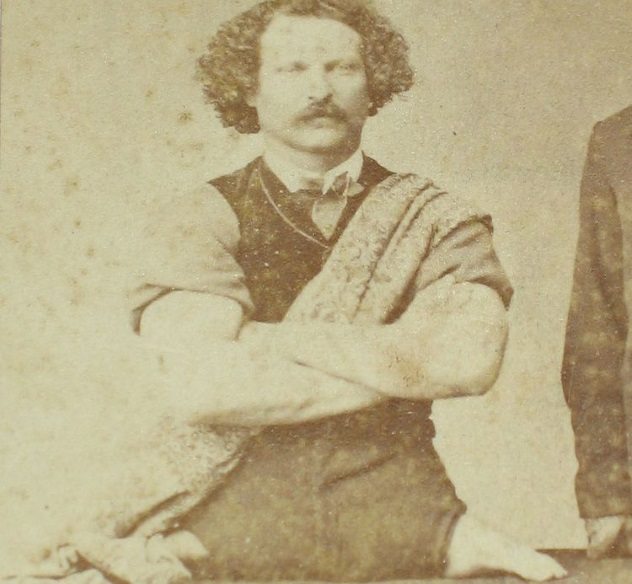
In 1844, Eli Bowen was born into a family of ten children. Eli, however, was different from the rest of the bunch, as he was born without legs. His feet protruded directly from his pelvis. This condition is a rare birth defect known as phocomelia. Little is known about the condition, but it is thought to be transmitted genetically or occur when the mother is exposed to certain drugs.
Though the lack of legs did cause limitations, nothing slowed Eli down. Early in his youth, he learned to use his arms as legs and even used wooden blocks to lift his torso up high enough that he could walk with ease. As he continued to grow, he labored in steady farm work, increasing his upper body strength to a strongman-like physique. However, in all his time working, Eli had one dream: to be an acrobat. He trained, mastered his art, and began performing in wagon shows.
As his fame began to spread, word of Eli reached P.T. Barnum, who hired him to perform in his sideshows. He continued displaying his acrobatic skills internationally, garnering fame and attention from everyone who got a glimpse of his incredible skills. Ladies also clamored to get a glimpse of Eli; as he matured, he became known for his appearance. He was often called the most handsome man in show business.
Eli’s good looks led him to love as he fell head over heels and married a young woman named Mattie Haines in 1870. They birthed four healthy boys. Even with a happy home, large fortune, and a prosperous family, Eli just simply loved performing, and he did so well into his eighties. He enjoyed the limelight and loved being in front of an audience. Eli died in 1924 due to pleurisy, only days before another performance.[4]
6 Nikolai Kobelkoff
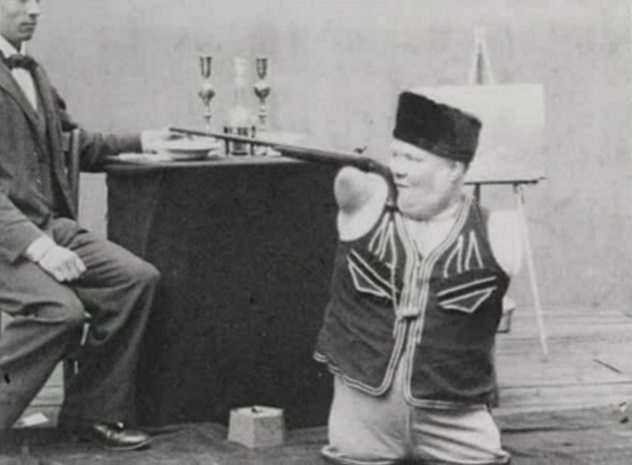
In July 1851, a Russian family welcomed their 14th child, but something was a bit odd. Nikolai Kobelkoff was born as a living torso, missing both his arms and legs. Nikolai faced hardship early on, as his parents were quite ashamed of having a son they deemed “abnormal.” The kept him locked away and would not let anyone see him. Villagers who knew of the boy would often scold and shame his parents when they were out in town.[5]
Though his childhood was quite awful, Nikolai found a bit of luck when a local schoolmaster took an interest in him. He took Nikolai in and gave him a proper education. Though he had no arms or hands, Nikolai learned to write, and his penmanship was excellent and very accurate. Learning to manipulate a brush between his chin and arm stump, he took up painting as well. When he reached the age of 18, Nikolai was so good at writing that he even took up a bookkeeping job with his family’s mining business.
In 1871, Nikolai was discovered by a showman, who helped him rise to fame as “The Human Trunk.” He performed for two years, mesmerizing audiences with all his extraordinary capabilities at mundane tasks. A crowd favorite was watching Nikolai thread a needle with expert precision. As his popularity grew, Nikolai became an international star, traveling the world and exciting audiences worldwide with his incredible abilities.
While in Vienna, he met and fell in love with Anna Wilfert. They soon married, with Anna carrying Nikolai down the aisle to the altar. Not long after their marriage, Nikolai and Anna started a family, producing ten children. Nikolai also branched into film, producing a movie in 1898 that documented his act. Becoming ever wealthier during his time performing, Nikolai spent some of his vast fortune to buy an amusement park in Austria. Nikolai’s exciting life came to an end in 1933, when he died in his home in Austria, wealthy and accomplished.
5 Carl Unthan
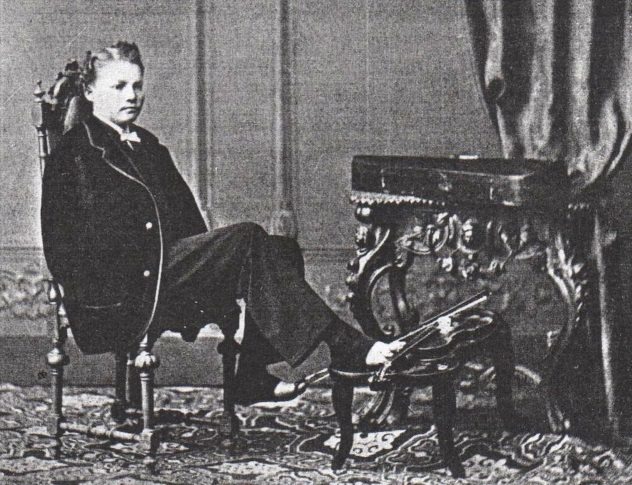
Carl Unthan was born in East Prussia in April 1848. Legends claim he was rescued shortly after his birth by his father due to the midwife trying to smother the boy after she realized he was born without arms. Carl’s father was his biggest supporter in life, teaching and encouraging him to use his feet for everything. In his youth, Carl quickly learned how to grasp with his feet and also to manipulate a pencil, learning how to write quickly and legibly. Enjoying music, Carl started learning to play the violin with his feet in his early twenties. Mastering the violin, the “Armless Fiddler” toured the globe performing music for all, even Strauss in Vienna.[6]
Carl was very talented at music, but he was also excellent at conversation and boosting morale. This came in useful, as Carl volunteered during World War I to help German amputees. He would go to the hospitals, where he would console those who had lost limbs, showing them that their predicament was not the end of the world. His mantra to the soldiers was, “Lost arms and legs are not the equivalent of lost lives.”
Later in his life, Carl married Antonie Neschta, and together, they toured the globe before finally settling down and moving to the United States, where he gained citizenship. The silver screen also beckoned Carl. At the age of 65, he appeared in a Danish silent film in which he played a passenger in a sinking ship. Carl passed away a very rich and well-loved man at the age of 80.
4 Frieda Pushnik
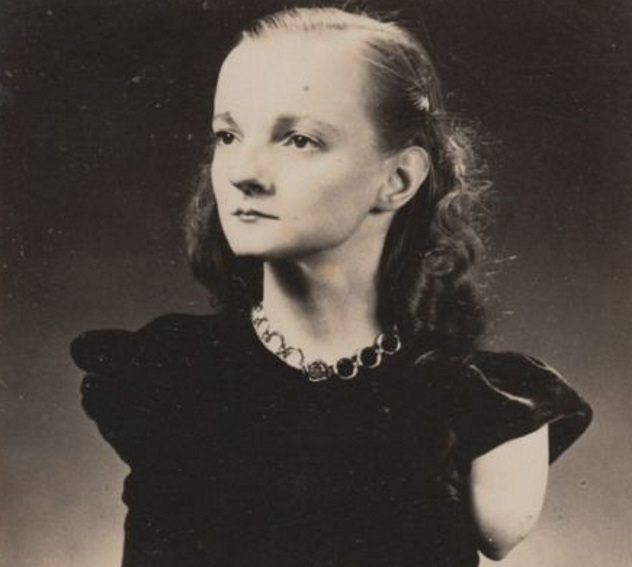
Frieda Pushnik was born in Pennsylvania in February 1923. Upon her birth, her parents were shocked to see that Frieda had no legs or arms, except for a small stump on her left. Frieda, a spirited woman, claimed that her deformity was due to a botched appendectomy performed on her mother while she was pregnant. Many others state that this was just a story made up for “sideshow creativity.”
Frieda never saw herself as any different from anyone even from an early age. Her mother would carry her to school, while her brother or sister would carry her home in the afternoon. She enjoyed playing with the other children and being outdoors. Her brother recounted a story in which he took young Frieda sledding and lost her in a snowbank. Worried about his sister, he dug her out as fast as he could to find her laughing hysterically at the situation. Frieda was incredibly self-sufficient. She learned to read before even attending school, could write by holding a pencil under her chin, and mastered many home skills such as eating with a fork, sewing, and crocheting.
Frieda was famous in her little town in Pennsylvania, but the world was ready to meet this incredible girl. In 1933, that happened thanks to Robert Ripley of Ripley’s Believe it or Not! fame. He brought Frieda to the 1933 World’s Fair, where she found instant success on Ripley’s oddities stage. She performed all the tasks for the audience, and by the end of the fair, Frieda had entertained over two million people. She later toured for six years with Ripley, delighting audiences across the United States. She then signed with the Ringling Brothers, with whom she found employment for the next 13 years.
Frieda enjoyed performing, but 1956, she was ready to retire. She moved to California, where she lived out the rest of her days with her family.[7] Sadly, Frieda succumbed to bladder cancer on Christmas Eve 2000, but her amazing life will never be forgotten.
3 Frances O’Connor
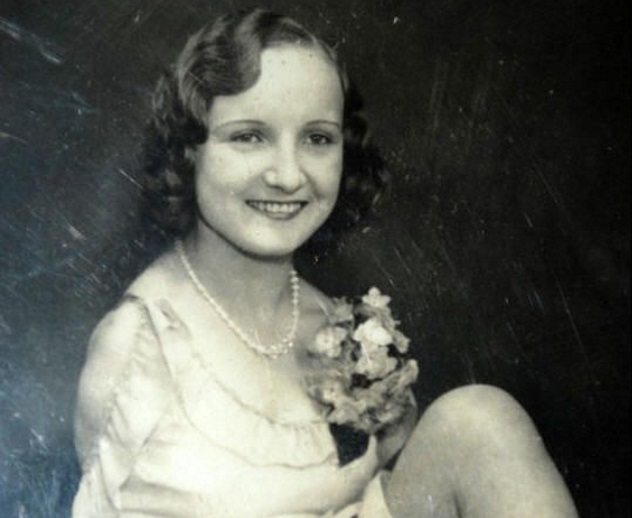
Frances O’Connor was born in Minnesota in 1914 and surprised her parents with having no arms. Growing up this way never stopped little Frances, as she never saw herself as different and made up for her lack of arms with a glowing, bubbling personality. Not much is known about her early childhood, but as she got older, she began touring on the sideshow circuit with her mother as her manager. She began performing at the Al G. Barnes circus, where her long, dexterous legs stole the show. She did common tasks, using her legs in all the ways others would use their arms.
The Ringling Brothers soon learned about this young lady and her amazing legs and signed her.[8] She worked with them for 20 years. As she matured, her legs only became part of the show. Frances was given the name “The Living Venus de Milo,” since she was beautiful as well as talented. Men scrambled to the sideshow to see Frances. The innocent and lovely lady was a far more reasonable and less scandalous viewing choice than the burlesque shows of the time. During a time in which too much skin was considered risque, Frances showed her legs, as they were acting as her arms. Frances received thousands of wedding proposals in her time, but she decided to never marry.
Frances was drawn to the silver screen, appearing in Freaks along with Prince Randian and Johnny Eck. She showed off many talents in the film, including her ability to smoke cigarettes, drink from a cup, and cut food with a knife and fork using just her feet. But her time in the spotlight passed, and Frances decided to retire. She moved to California, where she lived a quiet, peaceful life until her death in 1982.
2 Dick Hilburn

Dick Hilburn, known famously as “The Quarter Man,” was born in January 1918 in North Carolina. He had most of his right arm, no left arm, no legs, and a two-toed foot which stuck out from his left hip. Starting in his youth, Dick was strong, proud, and had an insatiable work ethic. He soon discovered that he could get around easily using a rolling board. He used his small right arm to push himself around quickly, and the constant exercise caused him to gain enormous upper body strength.[9]
After gaining strength of body, Dick worked on increasing the strength of his mind. He was a talented artist and worked daily as a sign, banner, truck, and trailer painter. Dick was also a desired tattoo artist. Having a great skill for managerial work, he operated and starred in his self-made oddity show, where he worked with many others who were considered oddities, including Carl “Frogboy” Norwood. When the show wasn’t in season, he ran a diner.
Dick was successful in all areas in life, including love. He married a young woman who, as Dick said, “had all her fingers and toes.” Dick kept working until he was physically unable to and died in 1971. All those who remember him say he was a strong-willed, smart, and hard-working man.
1 Stanley Berent
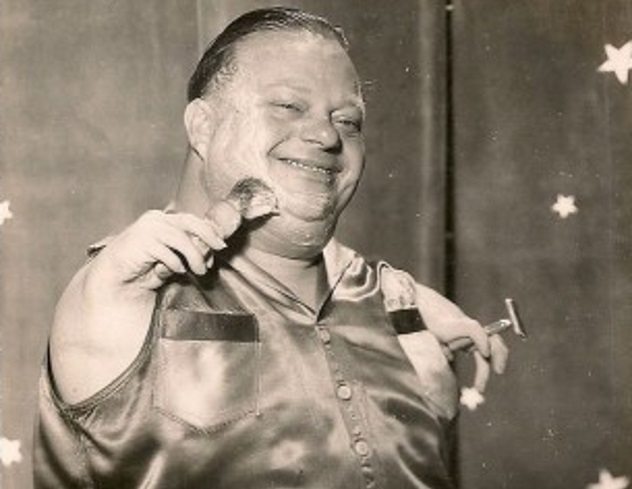
Stanislaus “Stanley” Berent was born in Pittsburgh in 1901. Though he had two fully formed legs, the same couldn’t be said for his arms. He simply had his hands attached at the shoulders. Like Eli Bowen, he suffered from phocomelia. Little is known about his early life before being discovered on a street selling newspapers by oddity scouters.[10]
After his discovery, Stanley was a huge hit at nearly every major sideshow and dime museum in the United States. He amazed audiences with his ability to do everyday tasks, such as shaving and smoking his cigars. What most people remembered about Stanley was his amazing, upbeat personality and his love for everyone. He enjoyed his colleagues and audiences as well as animals. Famously, Stanley befriended a chimpanzee, and when he was teased or mocked by spectators, his chimp pal was known to attack ill-wishers. Trying to maintain a bit of normalcy in his high-profile life, Stanley often stayed in hotels, where he invited his many friends over to play cards for hours.
In 1972, Stanley’s career started its downswing when a political correctness group thought that he and performers like him were being exploited. Even though his spotlight career was put on hold, it didn’t stop Stanley from keeping positive. He retired to Florida in 1976 and then moved back to his family home in Pittsburgh. Though he passed away in 1980, Stanley had a career that was spirited, upbeat, and lasted more than 30 years.
Hi! I’m Theta! I am a full-time librarian with a penchant for writing, animals, and all things obscure. I love traveling, my pets, Game of Thrones, and reading.
Read more about disabled people overcoming adversity on 10 Musicians Who Made The Most Of Their Disabilities and Top 10 Extraordinary People With Disabilities.








